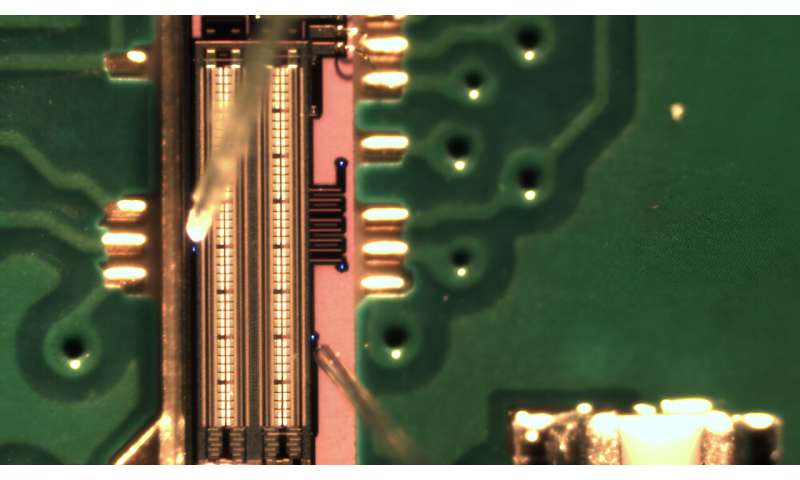NSF-funded project to increase network bandwidth for data communication

Data centers that store, process, and distribute data connect our world. Because of this growing demand, there is an increased need to share information as quickly and efficiently as possible. However, there is limited bandwidth within traditional data processing systems which makes this a challenge.
Texas A&M University researchers have received a grant from the National Science Foundation's (NSF) Advanced Chip Engineering Design and Fabrication program. The three-year project aims to advance the bandwidth and energy efficiency of circuits used to communicate in high-performance computing systems.
Dr. Sam Palermo, professor in the Department of Electrical and Computer Engineering at Texas A&M, will serve as the project's principal investigator. Palermo will be working alongside co-principal investigators, electrical and computer engineering professor Dr. Kamran Entesari and associate professor Dr. Pao-Tai Lin.
The research team intends to co-design and integrate electronic and photonic systems, combining custom-designed high-speed electronic front-end transceivers that interface with advanced photonic devices and materials, to increase the data distribution's bandwidth and energy efficiency. Co-designing and co-optimizing these electronic and photonic integrated circuits will allow for scaling in data center traffic capacity to support the always-increasing demand for networked devices driven by emerging applications in artificial intelligence, communications, computing and sensing.
"The proposed technology will enable energy-efficient coherent optical transceivers that will allow for dramatic scaling in data center traffic capacity to support the unprecedented growth in networked devices driven by emerging applications like connected automobiles," Palermo said.
To bring this project to fruition, Palermo will leverage his expertise in front-end transceivers designed for optical interconnect systems; Lin will design and fabricate the advanced photonic devices applying high-performance electro-optical materials; and Entesari will bring his expertise in high-frequency circuits.
The team will also collaborate closely with researchers at the National Chung Hsing University in Taiwan, funded through the National Science and Technology Council of Taiwan (NSTC). NSF jointly supports this project, in partnership with NSTC's Department of Engineering and Technologies, through the Texas A&M Engineering Experiment Station.
More information:
www.nsf.gov/awardsearch/showAw … storicalAwards=false
Provided by Texas A&M University College of Engineering